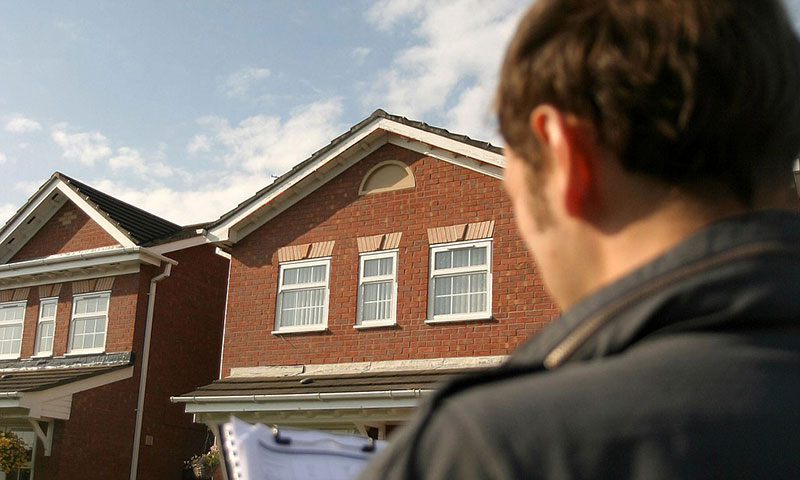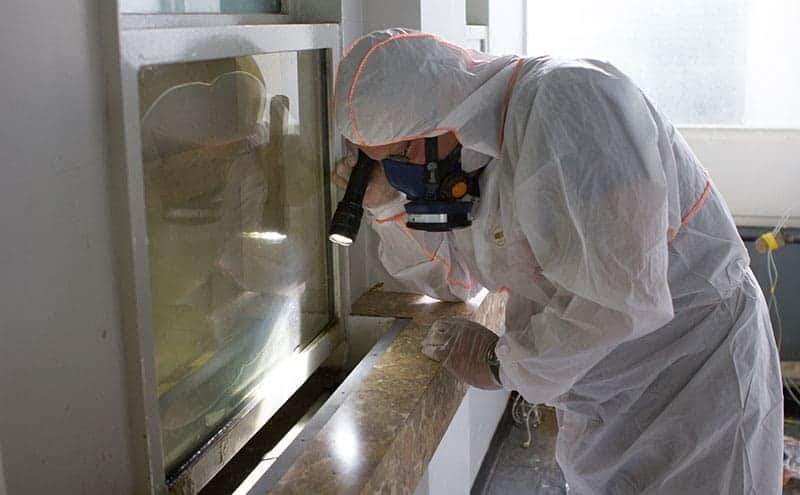Simple 6 Step Asbestos Management Guide

By following some simple steps, you can make it much easier for Duty Holders and those responsible for managing asbestos in premises, for achieving hassle-free asbestos compliance.
1. Training
Training is often an overlooked part of the process; however, it can be the starting block for triggering knowledge and covering the key requirements for achieving asbestos compliance.
If you have responsibility for managing asbestos within a property, a good starting point is to undertake some Asbestos Awareness Training.
The training provides a basic overview of what asbestos is, why asbestos was used, where in buildings it may be found, why it poses a hazard, the health effects associated with it, how to manage the risk, and a basic overview of key asbestos regulations to be aware of.
This training provides a basic foundation level of knowledge that can then be implemented to other elements to become fully compliant. It also allows contractors, trades people, etc. to be able to work safely.
Once you are asbestos aware it is imperative that you have suitable Duty to Manage Asbestos Training. Book yours now.
2. Confirm the Presence of Asbestos within your Premises
In association with current asbestos regulations, it is a legal requirement for any non-domestic premises constructed before the year 2000 to have an asbestos survey or suitable assessment.
The simplest way to identify whether asbestos is present is to have an asbestos survey carried out. A good rule of thumb is to assume asbestos is present until proven otherwise. The Health and Safety Executive (HSE) strongly recommends the use of UKAS accredited asbestos surveying organisations or certified surveyors to conduct asbestos surveys.
The minimum requirement to achieve legal compliance is an Asbestos Management Survey. These surveys are designed to identify asbestos-containing materials in the building that could be damaged or disturbed by two groups of people. These being; the general occupants of the building (staff, visitors, members of the public etc.) and also those undertaking repair and maintenance work on the building (maintenance staff, contractors etc.)
3. Asbestos Management Plan (AMP)
Your asbestos survey report will tell you where, if any, asbestos has been identified on your premises. It’s then down to you to manage the risk of that asbestos. Managing the risk means ensuring that no one is exposed to the harmful effects of the asbestos fibres.
How you achieve this should be documented in a written Asbestos Management Plan. The plan will include undertaking further risk assessments on the ACM’s identified during the survey, to assess those which are most vulnerable to disturbance. These are known as Priority Risk Assessments (PRA’s) and allow the Duty Holder to establish an action plan for ongoing management of the identified ACM’s, whether it be to leave the material in situ, monitor and manage, through to full removal or remedial action on the ACM.
4. Plan any Remedial Actions
It is a legal requirement to ensure that all ACM’s within your premises are maintained and in a safe condition and that you have a plan in place to manage the risk. The findings from your asbestos survey and your asbestos management plan will help you to decide whether any remedial action is required.
Where ACM’s are identified in a poor state of repair or are particularly vulnerable to disturbance, then it is usually recommended that these items be removed. However, remedial action can also take other forms such as encapsulation, repair, sealing or isolation.
The use of licensed asbestos removal contractors is strongly recommended for any planned remedial action of ACM’s within your premises.
It is important to make sure that all licensed asbestos removal contractors hold a license with the HSE. This is a legal requirement. This is recommended even for lower risk non-licensed works.
5. Communicating the Risk
Once you have an Asbestos Management Plan in place regarding how you are going to manage the risk of asbestos within your premises, you are required to then share this information with anyone who may need it. In particular, general occupants of the building and any staff or contractors undertaking repairs, maintenance or refurbishment work on the property.
This can be in the form of a hard copy Asbestos Register held at the property or via the use of electronic information. However, anyone who may come into contact with asbestos at your premises as part of their everyday work activity should be provided with information on the location and condition of the ACM’s to avoid disturbance of these materials.
6. Ongoing Review
Finally, both your Asbestos Register and Asbestos Management Plan should be reviewed at regular intervals, to ensure it is accurate and up to date. Your Asbestos Management Plan should detail how frequently this should happen.
The minimum requirement is to monitor and inspect the condition of ACM’s every 12 months. However, a more frequent regime may be required for higher risk materials or materials that are particularly vulnerable to disturbance.
If you have any questions or concerns regarding the presence of asbestos or your asbestos management plan, then please contact the Oracle team. We are UKATA accredited and able to provide the latest Asbestos Awareness Training (AAT). Also, our team of asbestos management experts can work with you to assist in the compilation, training and implementation of a compliant Asbestos Management Plan. We can then talk you through some simple ways of incorporating this into your asbestos management system, to ensure no one is put at risk on your premises.
Our team is on hand to take you through every step of the Asbestos Management process from start to finish. For further information 0844 800 0801

Written by Jess Scott
Jess Scott has been an all-round asbestos consultant since 1996. That’s nearly 3 decades of asbestos knowledge. He spends his time sharing that knowledge with the team at Oracle and with their clients. Jess's goal is, and always has been, to use my expertise in helping people to comply with the law. This legal compliance ultimately helps to protect everyone from the harmful effects of asbestos. Jess has acted as an asbestos expert witness in legal cases and is involved in many asbestos educational activities throughout the UK.


